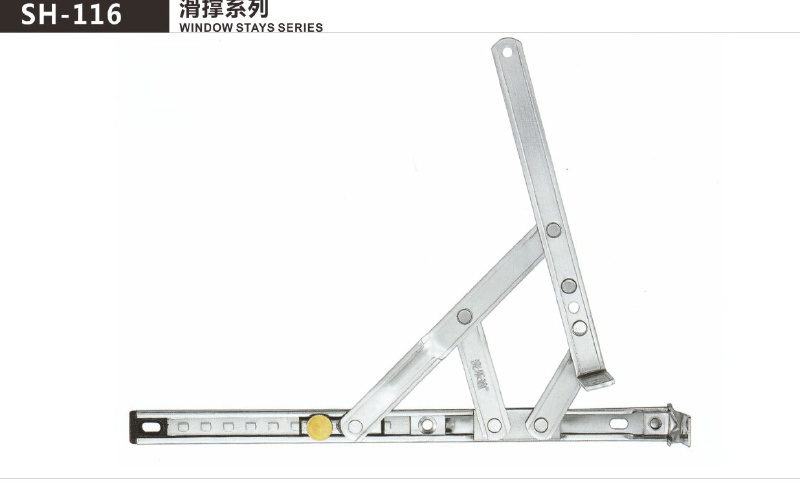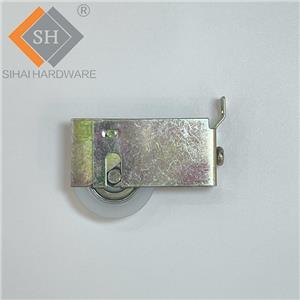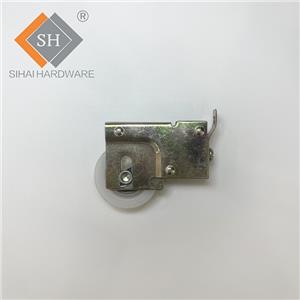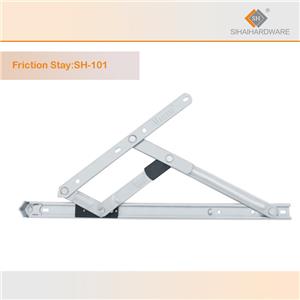TECH ARTICLE NO.27|Where are Stainless Steel Telescopic Hinges and Restrictor Stays Used?
TECH ARTICLE NO.27|Where are Stainless Steel Telescopic Hinges and Restrictor Stays Used?
In construction, furniture designing, and various mechanical applications, a variety of hinge types and restrictor stays are used. Two of these are stainless steel telescopic hinges and restrictor stays, which are widely utilized due to their durability, flexibility, and resistance to corrosion. In this article, we will explore the common uses of these devices.
Stainless Steel Telescopic Hinges
Stainless steel telescopic hinges, also known as extendable hinges or slide hinges, are widely used in many different fields. These hinges have the ability to extend and retract, providing a wider range of motion than traditional hinges. They are typically made from stainless steel, which provides excellent resistance to rust and corrosion, making them ideal for use in environments where they may be exposed to moisture or harsh conditions. Here are some of the most common applications:
1. Industrial Applications: In industrial settings, telescopic hinges are often used for doors and panels on machinery and equipment. These hinges allow for easy access to the interior of machines for maintenance and repair.
2. Automotive Industry: In the automotive sector, these hinges are used in the construction of toolboxes, utility compartments, and other storage spaces in vehicles.
3. Furniture Design: In furniture design and manufacturing, telescopic hinges are used on cabinets, wardrobes, and other storage furniture. They allow for doors and panels to be fully extended for easy access.
4. Marine Applications: Given their corrosion resistance, these hinges are also useful in marine applications where the presence of saltwater would otherwise accelerate rusting.
5. Construction: These hinges are used in construction for doors, windows, and other fixtures that require a larger range of motion.
Restrictor stays, also known as window restrictors or door restrictors, are designed to limit the opening angle of a window or door. They are essential safety devices that prevent windows and doors from being opened too wide, which can be particularly useful in high-wind conditions or in environments where children are present. Here's where they are typically used:
1. Residential and Commercial Buildings: Restrictor stays are most commonly used in residential and commercial buildings. They are installed on windows and balcony doors to prevent them from being opened too wide, providing an added layer of security and safety.
2. Hospitals and Care Homes: In healthcare settings, such as hospitals and care homes, restrictor stays can be used to prevent patients from opening windows wide enough to pose a danger to themselves.
3. Schools and Nurseries: In educational environments, restrictor stays are used to ensure the safety of children. They prevent windows and doors from being opened too wide, reducing the risk of accidents.
4. Hotels: In the hospitality industry, restrictor stays are often used in hotel rooms, particularly those located on higher floors, to prevent windows from being opened fully and posing a safety risk.
5. Offices: In office buildings, restrictor stays can be used to maintain a consistent indoor environment by limiting the amount of outside air that can enter the building.
In conclusion, stainless steel telescopic hinges and restrictor stays play critical roles in various industries due to their durability, flexibility, and safety features. Their stainless steel construction makes them resistant to rust and corrosion, further expanding their range of use. From industrial applications to residential and commercial buildings, these devices are integral to many facets of our daily lives.






